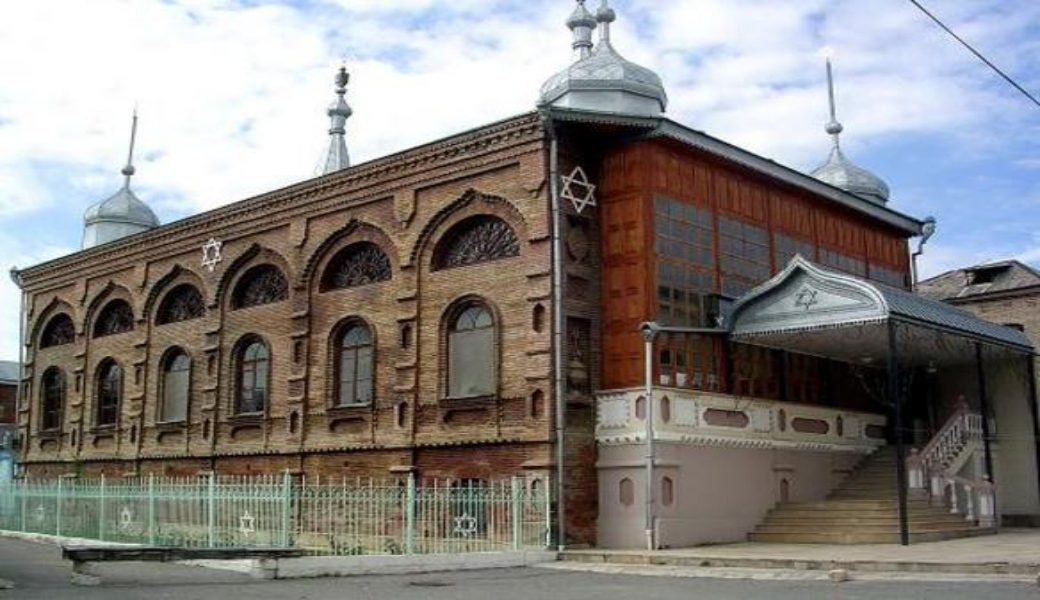Azerbaijan has long been home to many different ethnic groups. One such group is the Mountain Jews, descendants of Jewish people who migrated from Persia to the Caucus mountains hundreds of years ago.
Jewish heritage in Azerbaijan is represented by several monuments in Baku, Quba, Oghuz, Ismayilli, and other parts of Azerbaijan. Many ruins of ancient synagogues have been found in different parts of the country.
Jews have lived in Azerbaijan for centuries, but their arrival in Baku dates to the 1830s. Later, the community grew rapidly during the Oil Boom, which enticed diverse people to the city in search of work and wealth.
Currently, there are six synagogues in Azerbaijan: two in Baku, two in Quba, and two in Oghuz. A new Jewish synagogue, which became one of the biggest synagogues in Europe opened in Baku on March 9, 2003. The main Jewish heritage sites that operate to date in Azerbaijan are the following: Synagogue of Ashkenazi Jews, Synagogue of Mountain Jews, “Alti Gumbaz” Synagogue Gilaki Synagogue, “Ashagi Mahalla” Synagogue, “Yukhari Mahalla” Synagogue, The Museum of Mountain Jews.
Jewish Heritage in Guba
The Mountain Jews have historically lived in Azerbaijan and Dagestan. In the mid-18th century, following the death of ruler Nadir Shah, many small khanates emerged in present-day Azerbaijan. The Guba Khanate played an important role in the life of Mountain Jews in Azerbaijan. It was ruled by Hussein Ali Khan in the 18th century who moved his capital from Khudat to Guba and took measures to strengthen the khanate’s economic foundation. This included bringing in many craftsmen and tradesmen, including many Mountain Jews from the nearby settlement of Kulgat, which had been destroyed by Nadir Shah.
They established a new settlement known as Girmizi Gasaba (Red Village), which developed rapidly during the reign of the next ruler of Guba – Fatali Khan. Fatali Khan united southern Dagestan and the entire northeast of Azerbaijan within his state. As a result of the economic rise and friendly attitude towards Jews, the Jewish population of Red Village rapidly increased. Groups of Jews came from different parts of Azerbaijan, as well as Iran, Turkey and Dagestan. Thus, the population of Red Village grew from 3,000 in 1856 to 8,400 in 1916 – the record population here. After that, it began to decrease. The Fatali Khan period is considered a true renaissance in the history of Red Village and the Mountain Jews, and therefore the central street continues to bear his name. Today, Red Village is home to about 3,000 people, although many, especially the younger generation, leave to pursue a better life in Russia, the USA and Israel. Red Village is believed to be the world’s only all-Jewish town outside Israel. The village is connected to the city of Guba via a bridge across the Gudyalchay River. The most widely spoken language in Red Village is Juhuri. The Azerbaijani and Russian languages are also widely used.
Read more: https://jewisheritage.org/jewish-heritage-in-azerbaijan/guba




No comments:
Post a Comment